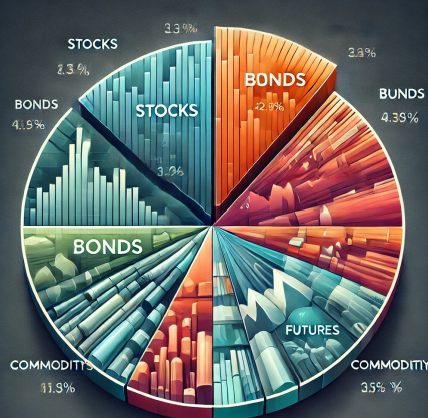Greenwashing Liabilities: Turning Regulatory Ambiguity into Financial Opportunity
Silent Threats: Risks Hiding in Plain Sight
In the world of financial risk management, much of the focus tends to gravitate toward the obvious: market crashes, interest rate fluctuations, or natural disasters. But the real risks often remain under the radar, lurking in the margins, subtly reshaping industries and upending portfolios in ways that many are not prepared for. In this section, we will examine one such overlooked yet potent risk in the fintech and sustainability sectors: the growing danger of "greenwashing" liabilities. This is a risk many high-net-worth individuals and investors in the sustainability space may not fully comprehend, but its financial implications are far-reaching.

Greenwashing Liabilities: A Risk in Plain Sight
As sustainability-focused investing becomes more mainstream, the rush to align portfolios with environmental, social, and governance (ESG) principles has led to an explosion in "green" financial products. In an ideal world, these would drive meaningful, positive change. However, in reality, not all green claims stand up to scrutiny. What’s worse is that many companies are incentivized to exaggerate or misrepresent their sustainability practices to attract ESG-conscious capital. This phenomenon, commonly known as “greenwashing,” has not only tarnished the credibility of the market but is increasingly becoming a potential financial risk for those who are not careful.
Consider a recent example in the renewable energy space. A major energy company advertised a new green bond that purportedly funded a series of environmentally sustainable projects. However, upon deeper investigation, it was revealed that a large portion of the funds had been allocated to projects with only minimal environmental impact—essentially, projects that merely paid lip service to sustainability. The bonds, initially perceived as a safe and lucrative investment for ESG-minded investors, quickly lost value as regulatory bodies began to scrutinize the legitimacy of the claims and imposed hefty fines. Investors who failed to thoroughly vet the product were left holding the bag, suffering significant financial losses.
This case is not an isolated incident. With growing demand for sustainable investment products, there has been a surge in companies rushing to label their products as "green" without truly adhering to the necessary standards. What began as a strategic move to attract environmentally conscious investors has now morphed into a significant legal and financial risk. For investors, the repercussions are severe: exposure to lawsuits, government fines, and reputation damage, all of which erode the value of a seemingly well-performing asset.
The financial implications of greenwashing go beyond simple reputational damage. For high-net-worth investors, it’s a direct threat to the integrity of their portfolios. When a company misrepresents its sustainability efforts, the investor’s capital is tied up in assets that may ultimately prove to be toxic. And while sustainability-driven investment strategies are thriving, the underlying greenwashing risk could be undermining the long-term viability of these investments. For those in the fintech or ESG sectors, this presents a challenge that traditional risk models, focused predominantly on market movements and traditional financial metrics, fail to capture.

Counterintuitive Mitigation Tactic: How to Profit from Regulatory Ambiguity
One might think that the most straightforward way to mitigate the risk of greenwashing would be to avoid ESG investments altogether. But such an approach would be missing the opportunity to profit from a rapidly growing sector. In fact, there is a counterintuitive strategy for turning this risk into a potential opportunity.
The key lies in understanding the regulatory landscape surrounding ESG claims. While greenwashing remains a major concern, many jurisdictions are still in the process of defining clear regulatory frameworks for sustainable finance. This regulatory ambiguity can create an environment ripe for strategic investment. Rather than avoiding the sector entirely, savvy investors can exploit this uncertainty by investing in companies or funds that are positioned to profit from tightening regulations around ESG disclosures.
For example, certain firms specialize in auditing and verifying ESG claims, ensuring that companies meet the necessary standards to back up their green initiatives. These firms are poised to benefit from increased demand as governments and regulatory bodies step up their scrutiny of sustainability claims. In addition, companies that are ahead of the curve in meeting upcoming regulatory standards—whether that’s carbon accounting, environmental certifications, or transparent ESG reporting—could gain a competitive edge over those that are not. By investing in these "early movers," investors can capitalize on the expected regulatory wave, benefiting from the added demand for transparency and credibility in the green space.
A case study that illustrates this approach involves a private equity fund that strategically invested in a sustainability-focused auditing firm just before the European Union’s Taxonomy Regulation came into full force. As the EU began enforcing stricter ESG disclosure requirements, the auditing firm saw a surge in demand for its services, and its valuation skyrocketed. Those who had anticipated this shift were able to profit handsomely, turning a complex regulatory environment into a profitable investment opportunity.
In essence, while the risk of greenwashing is very real, the financial opportunities that stem from regulatory shifts are equally compelling. Investors with the foresight to navigate this space carefully can transform a potential liability into a new source of wealth generation.

Looking Ahead
The risk of greenwashing liabilities is a classic example of a silent threat: one that’s lurking just beneath the surface of the growing ESG market. While this risk may not always be immediately visible, its impact is undeniable. For investors, especially those with a focus on sustainability and fintech, the financial consequences of overlooking such risks can be severe. However, as the regulatory environment evolves, there are innovative ways to not only protect against this risk but to turn it into an opportunity.
By leveraging strategic insights into the regulatory landscape and positioning their portfolios accordingly, high-net-worth investors can stay ahead of the curve. Ultimately, it is not just about avoiding risks but learning how to adapt to an ever-changing financial ecosystem and, more importantly, how to thrive within it.
(Writer:Wanny)





